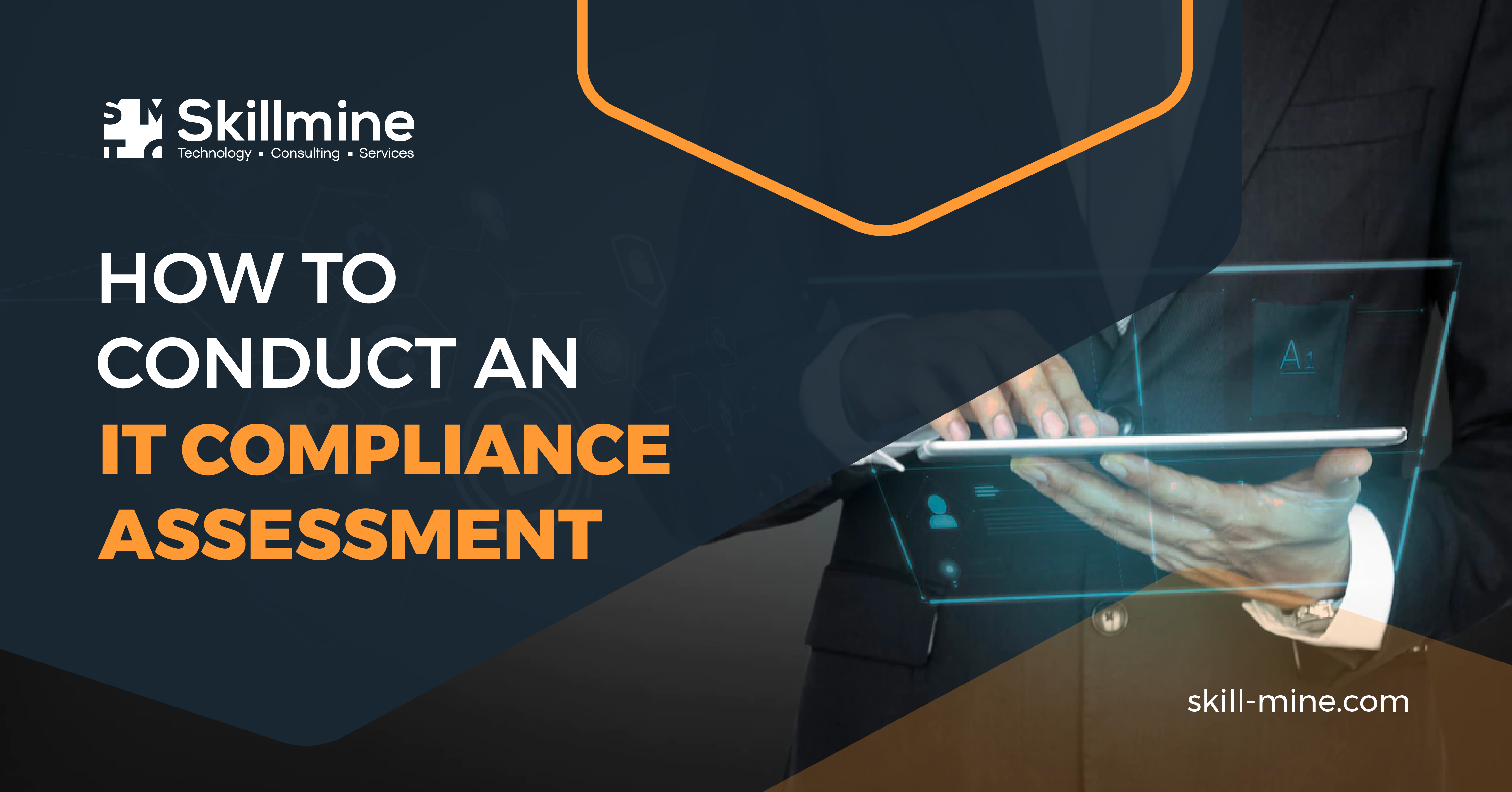According to the 2022 IT Compliance Benchmark Report by compliance platform Hyperproof, 90%
respondents said they were negatively affected by a third-party incident in the past year. 63%
respondents said they plan to grow their compliance teams to manage an increasing workload. With heightened business requirements and expectations, the necessity for a competent corporate compliance function has never been more crucial. An IT assessment helps companies develop a strong, better-performing IT function.
Why should your business conduct an IT compliance assessment?
An IT assessment assists in finding the appropriate solutions and structure for supporting them. While businesses recognise a risk/problem, how to resolve it is not always obvious. Companies frequently confuse a problem’s source and symptoms. Conducting an IT compliance assessment helps in identifying risks and mitigating them. Skillmine COMPLYment is an IT Governance, Risk and Compliance (GRC) solution that can help in this regard.
How does COMPLYment benefit your organization?
Provides a platform that unifies all your business and IT compliance requirements.
Allows continuous review and controlled testing of IT policies.
Manages and tracks various compliance requirements like PCI, ISO, HIPAA, SEBI, SAMA, GDPR, NIST, and more.
Promotes strong IT controls to ensure speedy resolution of audit problems.
Wish to streamline compliance management for your business?
Steps to Conduct It Compliance Assessment
1. Understand the current state of affairs
Discover and record essential business processes, systems, and transactions. Additionally, it would help if you used this chance to network with the employees that run the company’s systems and operations. Interview these individuals to learn what drives and stresses them.
2. Identify and map the company’s possible risk contact points
Identify the compliance risk contact points that have the potential to break applicable regulations once you have a thorough understanding of your compliance landscape.
The critical systems, recurring transactions, and key processes identified in Step 1 can all be evaluated for any potential problems related to the regulatory regimes. Alternatively, follow this IT Audit Checklist to map possible risk contact points
3. Examine the present safeguards in place to prevent, detect, and address violations
Do the company’s current policies and controls properly handle the risk entry points you identified? Determine the precise policy, method, work instruction, or other controls that apply to each risk touch point. With your understanding of each contact point in mind, evaluate the effectiveness of these controls.
Think about the chance that a violation will occur in light of the existing control, whether one would be discovered, and, if so, what the worst possible consequences of the breach may be. The contact points inadequately covered the compliance programme that must be filled.
4. Prioritize the compliance improvement actions you take
Most likely, your business lacks the resources to address all compliance risks simultaneously. The risk criticality of the gaps in your programme and the resources needed to close them should be ranked. More resources should be used to resolve the high-risk areas than low-risk areas.
It would help if you chose projects to handle your company’s compliance opportunities methodically after prioritising them. Find the compliance improvements that will benefit your business the most.
5. Regularly update your risk assessment
It’s crucial to remember that a risk assessment shouldn’t happen just once. It is pertinent to determine if the company’s risk assessment is current and has been updated regularly.
Different compliance risks will be raised by situations including company acquisitions, expansion into new markets (geographic or otherwise), corporate reorganizations, and interactions with new clients and authorities. Similar to how regulations can change, so can the way enforcement agencies see compliance concerns. It is crucial to have in place a planned, regular procedure for updating your risk assessment regularly.
Conclusion
Timely IT compliance risk assessment can secure your systems while ensuring you are up-to-date with the compliance guidelines. It also ensures that your firm’s reputation is unhinged. Skillmine COMPLYment ensures an organized asset, risk assessment and management for your business.
Looking for expert technology consulting services? Contact us today.





